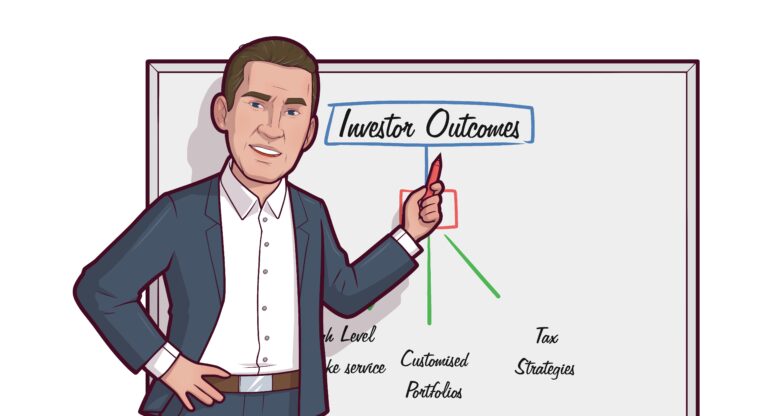Exchange Traded Funds, or ETF’s are a convenient way to buy diversified portfolio of assets with one single trade. Although some of the gushing commentary of young writers in personal finance columns may make it appear that ETF’s are the most amazing thing since public share ownership, the fact is that with any financial product, investors need to do their own research, and fully understand what they are buying before jumping in.
After 30 years in the investing business, one of the most important things I have come to learn is that a good investing strategy is one you can stick with through a full cycle. Because cycles do exist, and although down cycles have been short lately, at some point we will have another grinding 18 month bear market that will be testing on our patience. For this reason I encourage investors to do their research, and really understand what they own, and have conviction in why they bought it, so that they are not panicked out of their position at the first sign of trouble.
So, what is the landscape of available ETF’s?
With a share trading account you can buy an amazing array of investments.
Although ETF’s started with plain vanilla market cap weighted funds that typically tracked the largest 200 or 500 companies listed on a stock exchange, they have now morphed into many different breeds.
Here is how I categorise the main share based ETF’s sectors:
Market Cap
Factor Based
Sector Based
Active
There are other ETF sectors that allow investment into bonds, commodities and currencies, and even allow you to take a leveraged downside bet on market indexes. But we will keep this discussion to the plain vanilla share based funds.
Market Cap Based
These weight the shareholdings by total market value. For example, at present, the Commonwealth Bank is the biggest company on the ASX, so the Vanguard Australian Shares ETF (VAS) has 8.58% of its assets in CBA. The next biggest is CSL, which sits in the VAS at 6.20%. Next is BHP at 5.13% of the VAS ETF.
The biggest market cap weighted ETF’s holding Australian shares are: VAS, STW, and IOZ. These all track the ASX 200 or ASX 300 index.
Factor Based
Factor based investing seeks out particular financial characteristics in the companies that are to be bought. In recent years, factor based ETF’s have set about replicating some of what used to be done by active fund managers. For example, the ‘Value’ factor was identified as adding a level of outperformance versus market cap weighted portfolios in 1992 by academics Eugene Fama and Ken French. Before Fama and French, Warren Buffett and his mentor Ben Graham described themselves as ‘value’ investors.
This factor identifies the stocks that have lower price to earnings ratios, higher dividends yields, or a lower price to book ratio. Rob Arnott of Research Affiliates built on this work to develop what he calls Fundamental Indexing. Being a value guy at heart, I like these Value factor ETF’s such as the Betashares QOZ. It has a higher dividend, and lower P/E ratio than the market cap weighted ETF’s. In QOZ, Commonwealth Bank is 10.7% of the portfolio, while BHP is down at number five spot, with only 4.7% weighting.
Another factor is ‘Quality’. These stocks are filtered to find the ones with high return on equity, stable year-on-year earnings growth and low financial leverage. One international ‘Quality’ focused ETF is the Betashares QLTY, and another is the VanEck World Ex Australia QUAL.
Other factors are Low Volatility, Growth, and the increasingly popular but difficult to define ESG rankings.
Sector Based
This one is easier to define. It simply allows you to invest in a particular sector. Want to buy banks for their yield? Then you can buy the VanEck Australian Banks ETF, MVB. It holds a minimum of 6 banks, with the highest weighting being 20%. So at present you get an even spread of CBA, ANZ, WBC, NAB, Macquarie, and a few shares in Bendigo and BOQ. If you want more of a market cap weighted portfolio of financials, then Betashares QFN holds CBA at 29%, down to stock number 10, Medibank Private at 1.4%.
Other sectors are Gold Miners which can be bought via the VanEck ETF GDX. A-REITS are another sector where the VanEck ETF MVA holds 15 different Real Estate Investment Trusts, with a maximum weight of 10% to the largest, avoiding an overweight to the behemoths in the sector.
The latest sector based ETF to launch was today’s debut of the BetaShares Crypto Innovators ETF, with the code CRYP.
As I have warned in this article, Exchange Traded Funds – what’s in the tin? It is important to know what you are really buying, and read the fine print below the label. CRYP is not an investment into Bitcoin, Ethereum or other crypto currencies, but rather into the companies that are providing exchanges, mining crypto or otherwise large hodlers of crypto. The first trading day was wildly successful, at least for the issuers, as it smashed all records to date for inflow on the first day of trading.
Active
These are the most recent Exchange Traded Fund variation. Although cap weighted index funds are fairly transparent, active managers have been slow to the ETF game for two reasons. 1. They don’t want to expose their portfolios to the market makers and general public. 2. They sometimes have positions that may be hard to replicate or are not so liquid, which makes it more difficult for market makers to price what the fair value should be, and thus keep a tight bid/offer spread.
However, these are an important and exciting innovation, especially for those of us who believe active management is likely to outperform passive in future years. Some examples of Active ETF’s are the Munro Global Growth Fund. (MAET) While a typical ETF is always fully invested, the Munro Active fund can go to 50% cash, and can short, or hold hedging positions.
Another is the Magellan High Conviction Fund, (MHHT). Recently Magellan converted their High Conviction LIC (listed investment company) into an ETF. This helped to close the spread between the net asset value, and the market price. LIC’s can often trade at a big discount, and sometimes at a premium to net asset value. The mechanism of an Exchange Traded Fund tends to keep those spreads very small.
Conclusion
Exchange Traded Funds provide a convenient way of buying and selling a broad portfolio of assets. Some strategies that are important for diversification are still only found in unlisted managed funds, typically debt, hedging, and trading strategies, but with recent innovations, the ASX is a convenient place to start building a portfolio.


